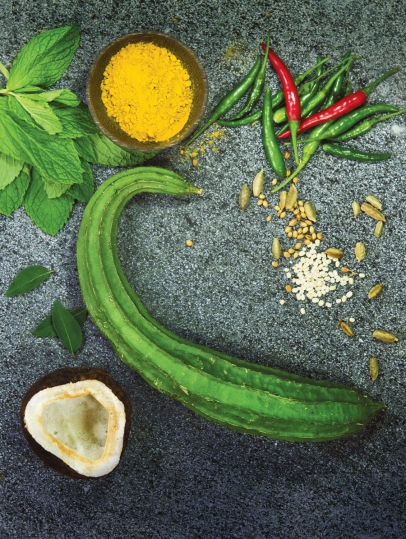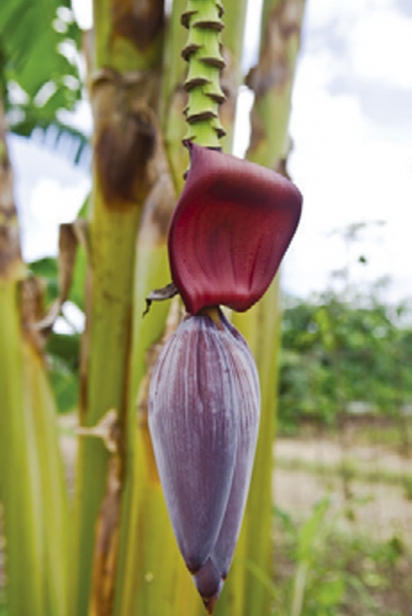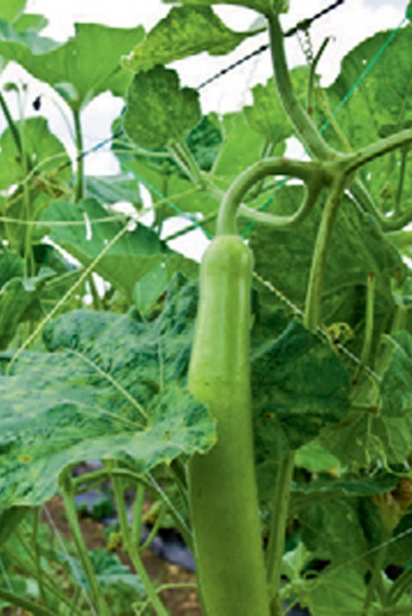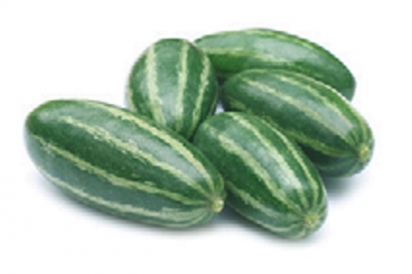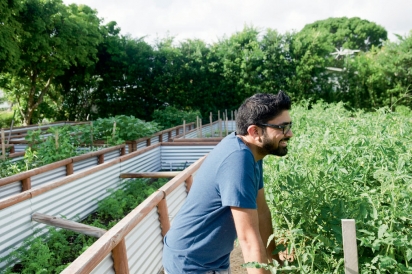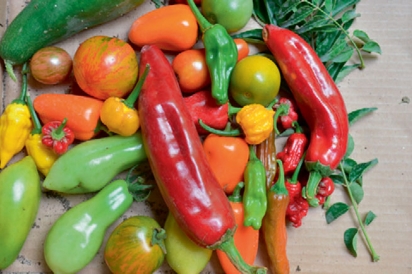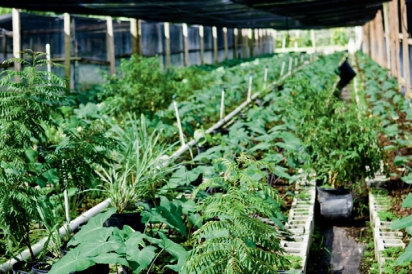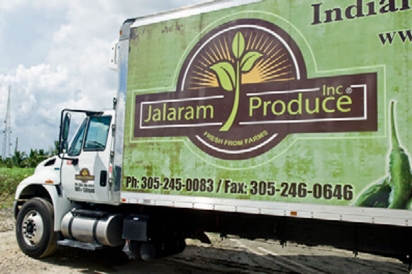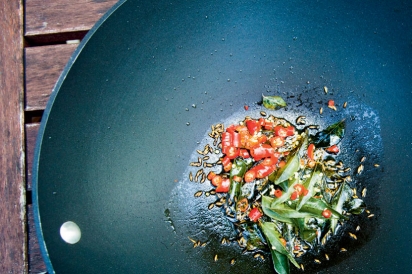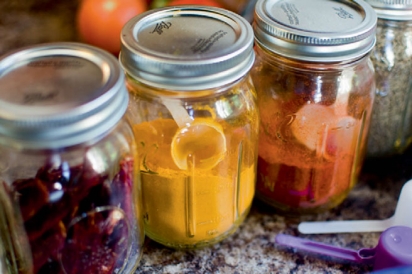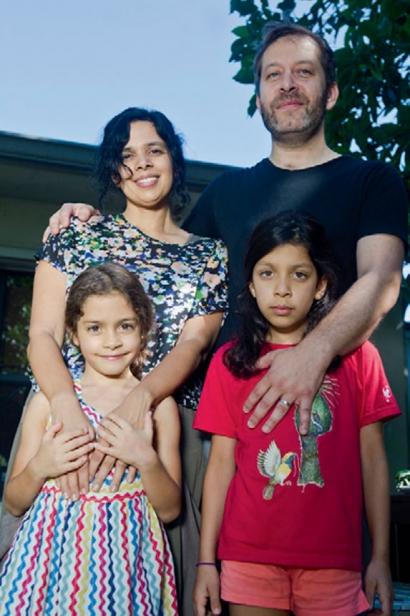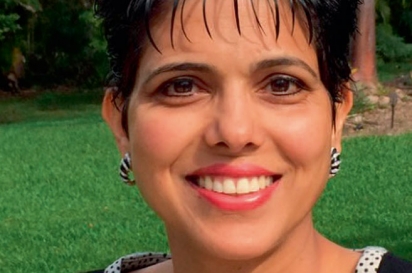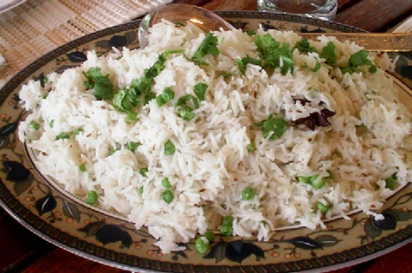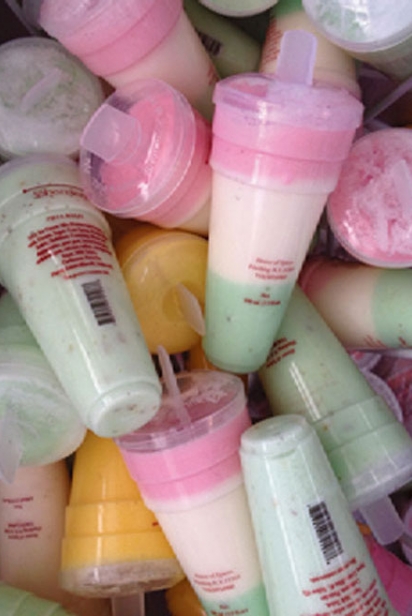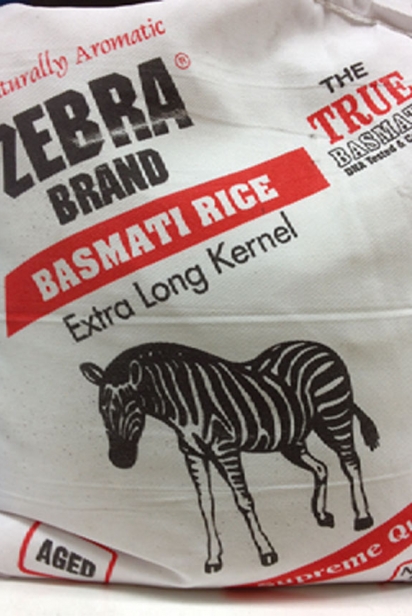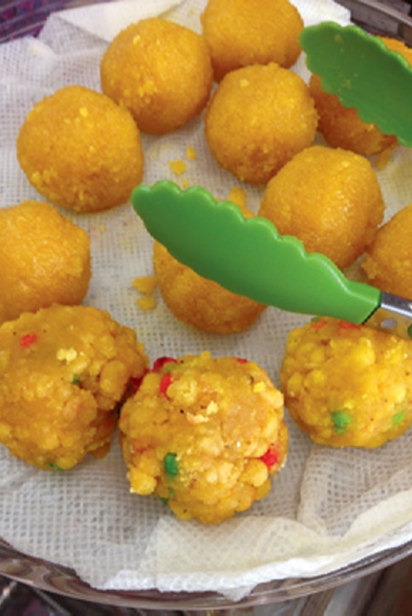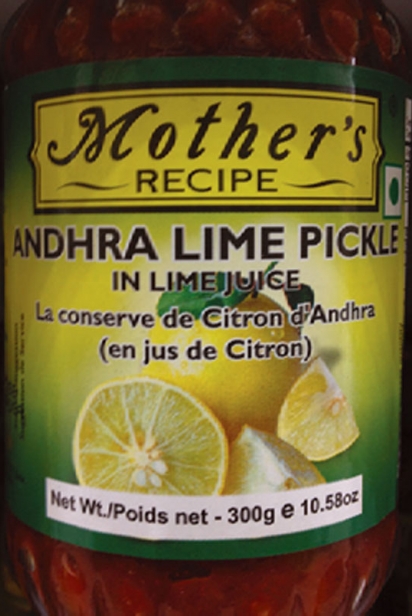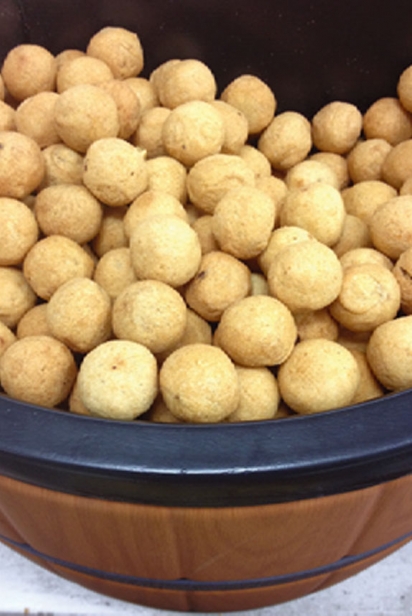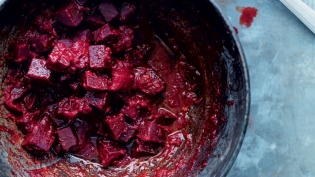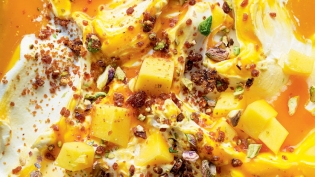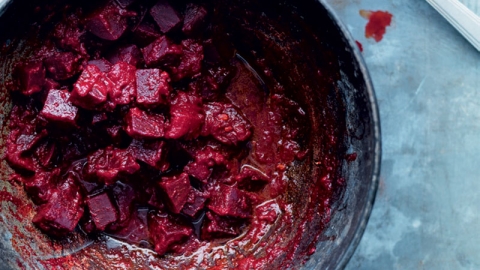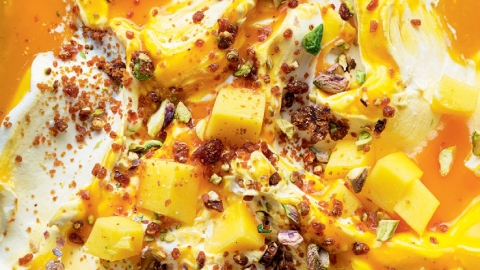Finding the Flavors of India
In our multicultural melting pot, people from the Indian subcontinent make up a small part of the population. But you don’t have to go far to find Indian and Pakistani foods, at strip-mall restaurants in Broward’s far western suburbs, in family markets, and growing in fields in Homestead and The Redland. Here are some of the people bringing these intriguing flavors to our ever-changing masala.
THE PRODUCE
Indian markets stock colorful cucumbers, gourds, eggplant, squash and beans. Some may already be in your backyard – banana and curry leaf, used as an ornamental – but all are used in specific ways for Indian dishes.
BANANA BLOSSOM (Musa acuminata): Tastes like heart of palm. Clean, chop for use in stir fries and curries, or simmer in coconut milk for stew.
CURRY LEAVES (Murraya koenigii): Citrusy and resinous. Fried with other spices to add a distinctive flavor to South Indian dishes.
DOSAKAI or Indian yellow cucumber pickle (Cucumis melo): Tangy, not bitter. Used in pickles, fresh chutneys, curries and soups.
DUDHI or bottle gourd (Lageneria siceraria): Sweet, mild, like zucchini when young. Peel and chop for stir fries and curries.
EGGPLANT or brinjal (Solanum melongena): Various shapes and colors. Less bitter and sweeter than bigger varieties. Fried, used in stews.
KARELA or Indian bitter melon (Momordica charantia): Used green (it’s too bitter when the fruit turns yellow), unpeeled, sometimes blanched. Chop and use in stir fries, curries, pickles, or fry, stuff and bake.
PARVAL or pointed gourd (Trichosanthes dioica): Similar to cucumber or squash. Used in stir fries and curries, or de-seeded and stuffed.
SNAKE GOURD or padval (Trichosanthes anguina): Peeled and seeded. Cut into rings or slices. Used like zucchini, pickled and in stews and curries.
TINDORA or Indian cucumber or gherkin (Coccinia grandis): Cook first. Cut in strips or slices and stir-fry or use in stews or curries; also pickled.
TURIA or ridge gourd (Luffa acutangula), pictured on p. 29: Also known as Chinese okra. Peel and cut into chunks to cook in dal, stew, chutney.
YARD-LONG BEANS (Vigna sinensis): Crunchier and denser than regular green beans. Cook like green beans; use fried, in stews and curries.
Much of what we grow in subtropical South Florida – mangos, bananas, coconut, ginger and turmeric, eggplant, squash and hot peppers – are essential foods in many Indian cuisines, especially in the southern states of Kerala, Andhra Pradesh, Tamil Nadu and Karnataka. In Homestead and the Redland, backyard gardeners and commercial growers are planting beloved Indian varieties of those fruits and vegetables that find their way to home dinner tables, restaurant menus and markets across the United States.
Niven Patel, chef de cuisine at Michael’s Genuine Food and Drink in Miami’s Design District, lives in Homestead in the heart of the agricultural community. In his two-acre backyard are lychee, mango and avocado trees plus 14 raised beds. He grows some produce for the restaurant group, providing all the basil for Michael’s Genuine, Harry’s Pizzeria and the Cypress Room – but much of his space is devoted to Indian produce: Indian purple yam, black garbanzo used in bhel puri (a Mumbai street food), mint for chutney, white and yellow turmeric, tuvar peas, red Indian carrots and long green Indian eggplants. “Baby eggplants have less seeds and aren’t so bitter as the bigger ones,” he says. He also grows a rainbow of chili peppers: Peru yellow, ghost peppers, peppadews, sweet peppers and others, using seeds his family brings back from India. Tending his impressive garden brings Patel joy – “it’s my escape” – and he shares the fruits of his labor with his restaurant co-workers when they visit Rancho Patel.
THE GROWERS
On a much larger scale, Jalaram Produce in Homestead grows Indian produce on their 465 acres in Homestead and ships it to Indian markets in New York, New Jersey, Texas and California, as well as in Broward, Tampa and Orlando – “wherever there are Indian restaurants,” says owner Mahesh “Mike” Raolji.
In the business for 25 years, he moved here from Pennsylvania in 2001 to grow Indian vegetables year-round, starting with a few acres. Today, he grows Indian bitter melon, Indian spinach, peppers, five varieties of Indian beans, baby eggplant, okra, guava, moringa, okra, among other fruits and vegetables. Sometimes, he hosts a Saturday market at his packing house, located near Robert Is Here in Homestead, where members of the Indian community can visit the farm and pick up produce they’re used to eating, he says. “Indian baby eggplant we eat every day. Indian bitter melon is like medicine for diabetes.”
Michael’s Genuine food and drink
JALARAM PRODUCE
THE HOME COOKS
The smoky, pungent fragrance of sizzling spices and the flavors coming out of Anita Sharma’s kitchen were just too irresistible not to share.
That’s what friends told Sharma and her husband, Mathew Webb, at their dinner parties, where the Andra Pradesh native cooked South Indian dishes using recipes from her other and her aunts. So the couple decided to set up an online food delivery service, preparing weekly dishes to order and then delivering them every Monday, inspired by the Indian tiffin meal delivery system. There’s only one weekly choice, but “every meal is different, so there’s the element of surprise,” Sharma says.
“I want to introduce people to South Indian home cooking and keep the traditions alive.” A typical meal might be a stew made of fresh chickpeas simmered with ginger, tamarind and roasted cumin, with sides of basmati rice with tomatoes and edamame beans. Webb, an architect, makes the pickles and fresh chutneys that accompany their dishes.
Right now, the couple delivers their prepared foods to Biscayne Park, Miami Shores, El Portal, Belle Meade, Morningside, Shorecrest and Little River.
They’ll also do a pop-up at the Miami Shores Green Day Street Fair Sat., Oct. 24, NE 2 Ave. between 94th and 99th streets, from 3:30-7:30pm.
THE TEACHER: Ayesha’s kitchen
For the past nine years, Ayesha D’Mello has been teaching Indian cooking classes in her Kendall home to students as young as 8 and as old as 92, and most of them Latinos.
Originally from Goa, D’Mello has developed 18 different menus covering street foods, vegetarian dishes, classical Indian cuisine, breads and other foods covering the subcontinent. She wants to correct misconceptions about Indian food and tout its health benefits. “‘Spicy’ is a blend of spices, not necessarily heat,” she says, adding that spices are used by Indians to tackle diabetes and high blood pressure, and for antioxidant qualities. “I also use organics because they taste so much better.”
Her classes offer practical cooking tips for home cooks crunched for time, with recipes cooks can duplicate easily in their kitchens.
D’Mello grows Indian eggplant, bitter melon (karela), chili peppers, mint, curry leaves and other herbs in her backyard; she’s also got an impressive collection of fruit trees: sapodilla (chikoo), jackfruit, cashew, starfruit, lychee, custard apple, mango and three varieties of bananas, including the red-peeled Mysore bananas.
MARKETS & RESTAURANTS
Indian groceries are a true source of joy for food market aficionados. They’re crowded with fragrant spices, sacks of rice, bags upon bags of snack foods, jars of pickles and chutneys, freezers filled with flatbreads, Indian produce and Bollywood DVDs. These are a few standouts.
ASIA GROCERY | 6785 SW 56 St., Miami
Fifteen years ago, Khalid Khan opened this small market, stocking Indian, Pakistan and Middle Eastern foods. Today, he says his customers are mostly non- Indians. In the back, there is a two-table cafe he set up primarily for University of Miami students, serving fresh halal food for under $5. He also supplies chutney and other products to Qatar Airways, Turkish Airlines and Virgin Atlantic.
SPICE ‘N’ CURRY | 123 SW 107 Ave., Miami
Serving the FIU crowd and the Doral and Westchester communities, this grocery/ cafeteria features a lunch counter in back selling curry puffs, samosas and other quick, affordable treats. They also stock a selection of Indian beers. Owner Jai Mazumdar, from Bombay, loves the diversity of his clientele. “Selling Indian foods to Indians is not the fun part – selling it to everyone else is,” he says. “It’s possible only in Miami.”
LITTLE MARKET | 3062 N Andrews Ave., Wilton Manors
This longtime market stocks a full line of Patak pickles and chutneys in addition to typical market fare. Owner Saleem Aijaz says what’s popular right now are herbal medicines, soaps, non-chemical products like henna and fresh turmeric.
PATEL BROTHERS | 3428 N University Dr., Sunrise
This spacious supermarket is part of a family-owned chain throughout the U.S., is one of four in Florida (others are in Tampa, Orlando and Jacksonville). “We get customers from India, Pakistan, Bangladesh, Jamaica,” says owner Akash Patel, who moved here from New York to open this location last summer. Freshly harvested produce (much of it locally sourced from Jalaram Produce) is a standout, along with barrels of bulk snacks, four rows of pickles, freezer cases packed with seafood and prepared foods.
South Florida’s Indian restaurants range from strip-mall counters to fine dining restaurants. West Broward – especially Sunrise, Lauderhill and Pembroke Pines – has a good concentration of small restaurants, many offering lunch buffets and plenty of choices for vegetarians.
GREATER MIAMI
AYESHA SAFFRON FINE DINING
328 Crandon Blvd., Key Biscayne
BENGAL INDIAN CUISINE
2010 Biscayne Blvd., Miami
BOMBAY DARBAR
2901 Florida Ave., Coconut Grove
BOLLYWOOD MASALA
7400 SW 57 Ave., South Miami
IMLEE – AN INDIAN BISTRO
12663 S Dixie Hwy., Pinecrest
RAJA’S INDIAN CUISINE
33 NE 2 Ave., Downtown Miami
TASTE BUDS OF INDIA
5850 Sunset Dr., South Miami
ZAIKA INDIAN CUISINE
2176 NE 123 St., Miami
GREATER FORT LAUDERDALE
ARUN’S INDIAN KITCHEN
10278 W Sample Rd., Coral Springs
BOLLYWOOD BIRYANI
8270 Griffin Rd., Davie
BOMBAY CAFÉ
3060 N Andrews Ave., Wilton Manors
CHUTNEY & PICKLE FINE INDIAN CUISINE
10190 W Sample Rd., Coral Springs
INDIAN CHILLIES
4465 S University Dr., Lauderhill
RUCHI INDIAN RESTAURANT
17085 Pines Blvd., Pembroke Pines
UDIPI
2100 N University Dr., Sunrise
WOODLANDS
4816 N University Dr., Lauderhill
THE MASTER: Madhur Jaffrey
Prolific cookbook author and actress Madhur Jaffrey, perhaps the world authority on Indian food, returns to South Florida for the Miami International Book Fair to talk about her latest book, Vegetarian India: A Journey Through the Best of Indian Home Cooking.
"It's not my first vegetarian cookbook, but it is my first all-Indian vegetarian cookbook," she says. For the book, she traveled throughout India, collecting recipes from home cooks along the way. "In South India we went into a chile growing area where chiles were being auctioned. Everyone was sneezing and coughing. It was quite an experience." Her travels took her to temples and ashrams–"they don't use too much oil or spice, it is incredibly delicious"–and fields, where she looked in the lunch boxes of the workers and compared their meals to what their counterparts in Italy might have. "Rice instead of pasta, simple chutney of tomato, red chili, garlic, simple earthy food–you always compare! I look at how people eat and see great similarities."
Hundreds of millions of Indians are vegetarians, and vegetarian cooking today is commanding more attention globally, says Jaffrey. "Even in Pakistan, there are one or two meatless days now," she says. "We're looking at foods that grow naturally, trying to be good to our bodies." If you're new to Indian dishes, Jaffrey suggests you start small and choose recipes in her book that don't call for a lot of specialized ingredients. "Pick a couple of recipes. See how you like it." There is one highly recommended ingredient that may be unfamiliar to many, a flattened rice called poha. "I feel everyone should have this in their pantry," she says. "It's like having instant rice, but with all the nutrients. It's an instant meal."
RECIPES
Mangoes Mumtaz (Aam Mumtaz)
Punjabi-style Beets with Ginger (Punjabi Chukandar Ki Sabzi)
Flattened Rice with Cauliflower and Peas (Phool Gobi Aur Matar Wa La Paha)


